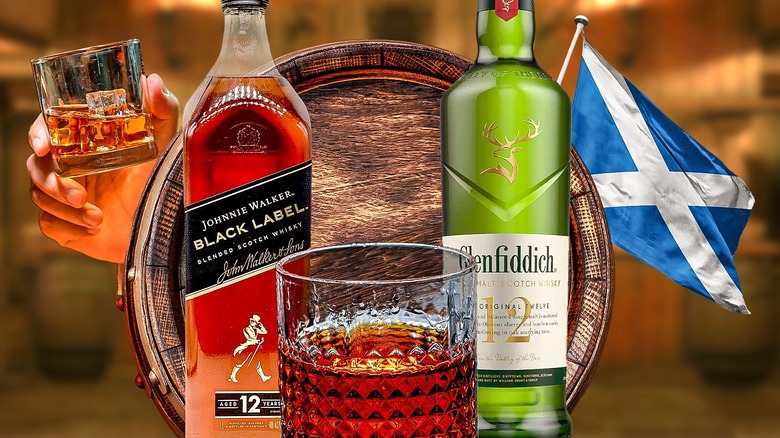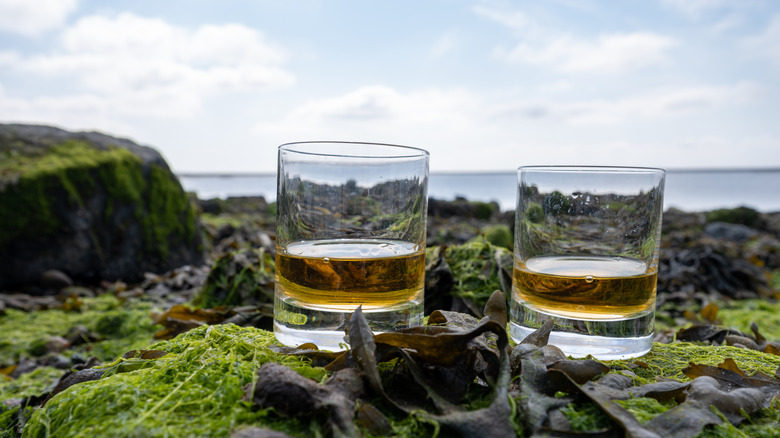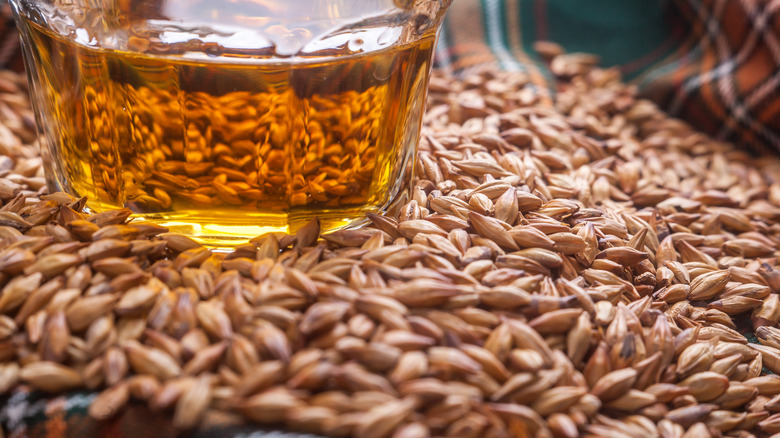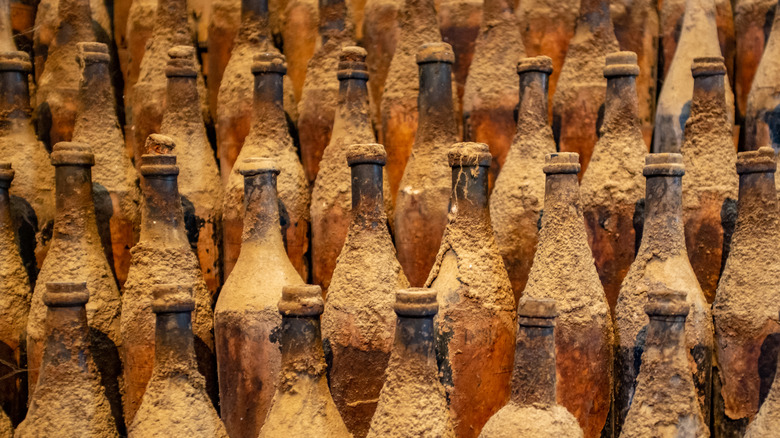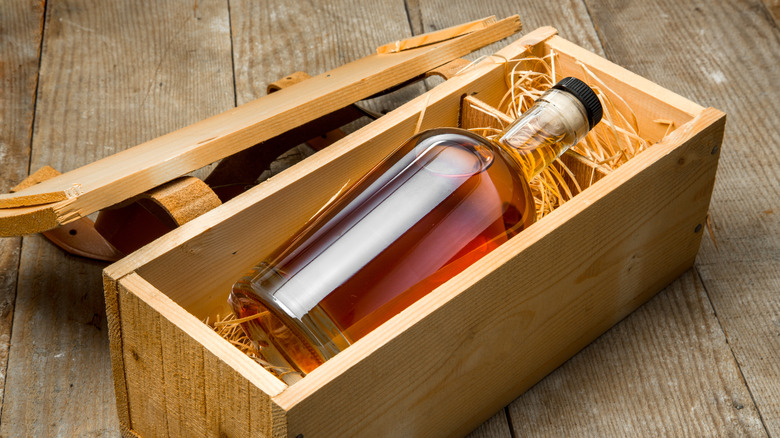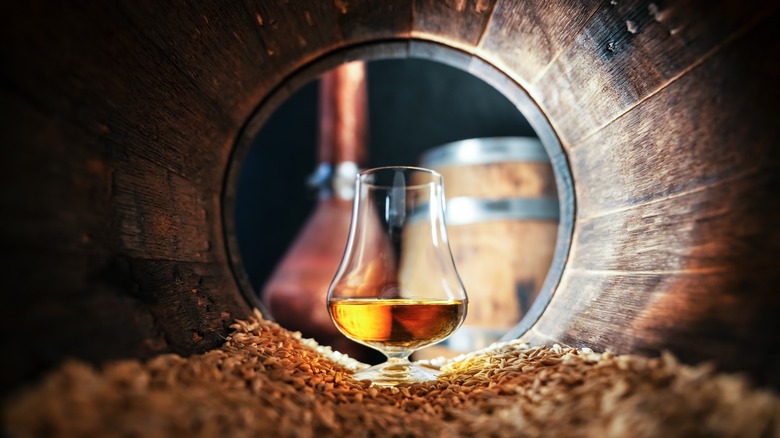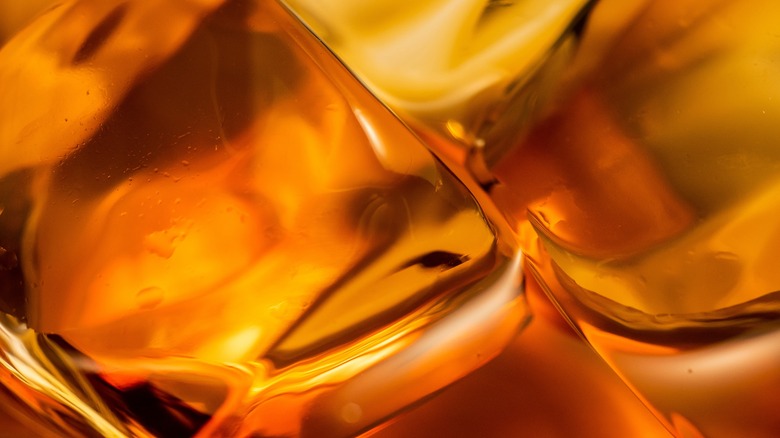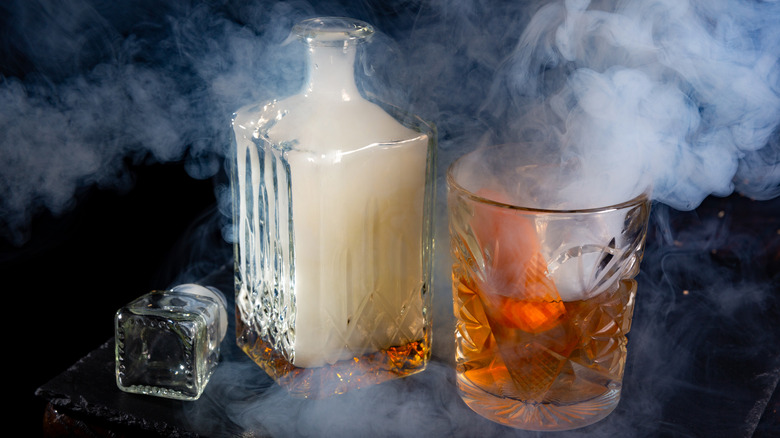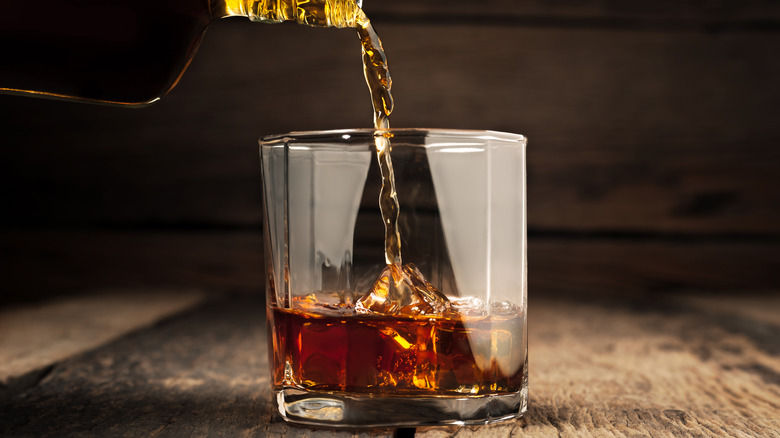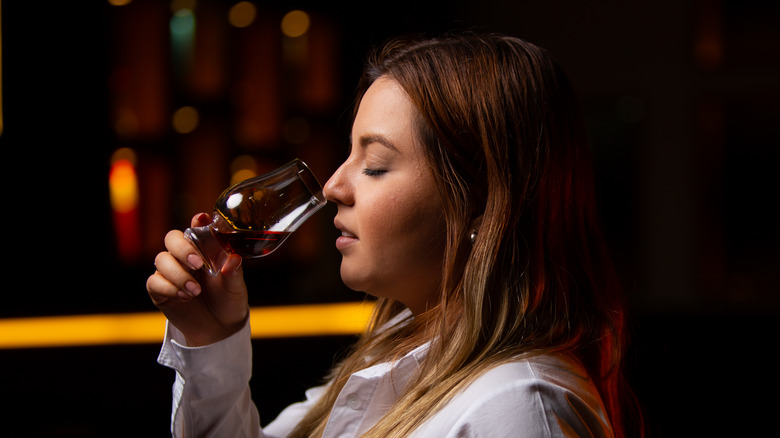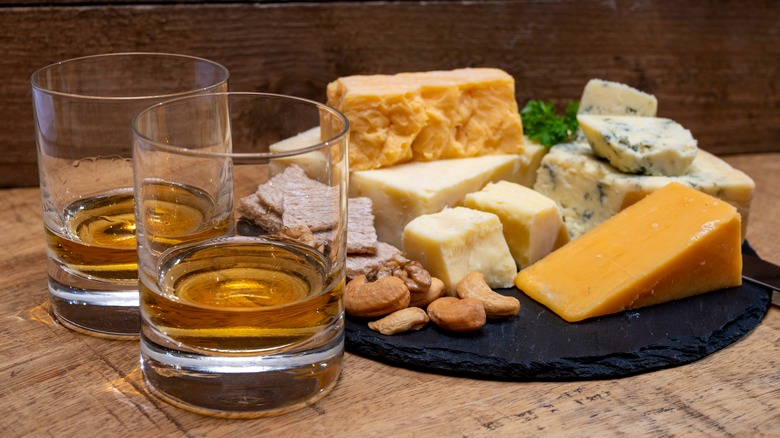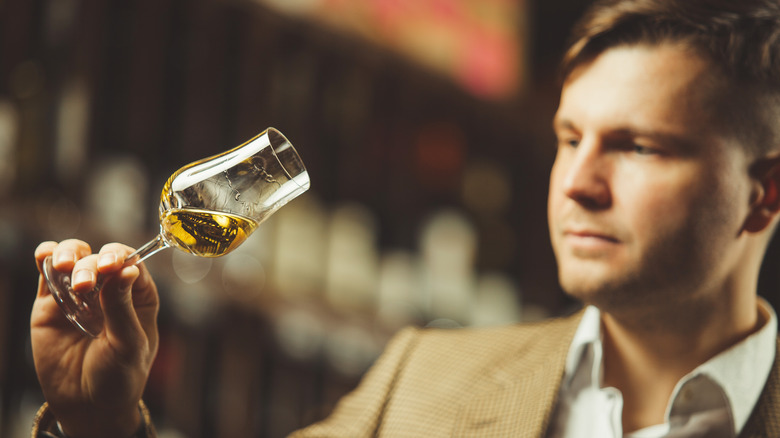12 Scotch Whisky Myths You Should Seriously Stop Believing
There are few spirits as iconic as Scotch whisky. However, despite its extensive history and huge global popularity, many myths still persist about Scotch. Some of these misconceptions surround whisky in general, while others only apply to the Scottish style.
I have to admit, once upon a time I believed many of these myths myself. Fortunately, thanks to a lengthy international bartending career and a personal passion for learning about whisky, I've learned the truth about Scotch. However, I've also realized that plenty of Scotch myths are still widespread. The majority of these fallacies aren't particularly harmful, but they can put people off trying Scotch whisky or prevent them from finding styles they may love.
In the hope of setting the record straight, I reached out to Annabel Thomas, founder and CEO of Nc'nean — an outstanding distillery based in the Scottish Highlands. Despite being a relative newcomer to the Scotch industry — the distillery was founded in 2017 and released its first expression in 2020 — Nc'nean has been making waves in the whisky world. An experimental approach to distilling and a laser-focused commitment to sustainability are just some of the factors that make Nc'nean stand out. The distillery's unique take on whisky-making has paid off in the form of global acclaim and numerous accolades, including a highly coveted double gold medal for its Organic Single Malt. So, now it's time for the two of us to set the record straight on Scotch.
Whisky was invented in Scotland
Whisky's ties to Scotland run long and deep. The country has been producing whisky for hundreds of years, with the first written mention of Scotch dating all the way back to 1495. Even the name whisky is derived from "uisge beatha," a Gaelic phrase that literally means "water of life."
However, there are Irish records that refer to whisky from 90 years earlier. Still, there's a good chance that whisky predates both of these written accounts, so it's hard to say for sure who was first. Regardless, there's good evidence that neither Scotland or Ireland invented whisky. Distillation — the process used to create high-strength alcoholic spirits — likely dates as far back as 2000 B.C. The most popular theory is that Christian missionaries brought distillation techniques to Ireland and Scotland from mainland Europe. Even if the Scots came up with the concept of distilling fermented barley mash all by themselves, it's doubtful that they were the first to do so. The first form of whisky was most probably invented somewhere in Asia, where distillation was used to produce medicinal spirits. However, unless new evidence comes to light, it's unlikely we'll ever know for sure.
Single malt is higher quality than blended whisky
When it comes to Scotch, the term "single malt" implies a certain level of quality. However, the terms "single malt" and "blended" are often misunderstood. This isn't helped by the fact that — more often than not — single malt Scotches are pricier than their blended counterparts. This leads to assumptions that single malt whiskies are inherently the better of the two, but that's not always the case.
The definition of a single malt is a whisky made by a single distillery with only one type of malted grain in the mash bill — typically barley. It must also be distilled in pot stills and aged for at least three years. However, it's not uncommon for folks to conflate single malts with single barrel whisky. Even single malts are typically blended with whisky from different barrels with varying ages.
Blended Scotch can refer to expressions created by combining whiskies from more than one distillery, whiskies made using grains other than malted barley, or a mixture of the two. Although whisky made with only malted barley from one distillery is a good indication of a high-quality dram, that doesn't prevent a blended whisky from being exceptional.
The older the whisky, the better it tastes
Although it wasn't always the case, modern whisky is aged in oak barrels before it's bottled. Over time, flavor compounds from the wood infuse the spirit with a wide range of delicious flavors. Typically, the longer the whisky is aged, the richer, smoother, and more nuanced its flavor profile becomes. However, as Annabel Thomas puts it, "Age is just one factor in determining a whisky's character, but it doesn't always mean better."
"Younger whiskies can be just as flavourful and vibrant," Thomas explains, "especially when a distillery puts a lot of focus on creating a high-quality spirit before it goes into a cask." In her experience, "It's about balance, quality, and personal preference rather than age alone."
Part of the misconception surrounding older whiskies comes down to their cost. They generally command a higher price; however, this is partly due to the expenses associated with maturing whisky for extended time periods. Plus, it's possible to age whisky for too long, and there also comes a point of diminishing returns. The truth is that it's entirely possible for younger whiskies to taste great at the hands of a skilled and dedicated distiller.
Whisky continues to age in the bottle
While we're on the subject of maturing whisky, it's worth debunking another related myth — the idea that whisky continues to age after bottling. we can see why people make this assumption, after all, it's common knowledge that wine is often cellared to allow time for it to reach peak quality.
The key difference is that wine is fermented, so there's a relatively low cutoff point in terms of alcohol strength. This means the organic compounds that remain in the wine can continue to develop over time. Spirits, however, are distilled to a much higher alcohol content which eliminates these compounds. Although Scotch whisky absorbs flavors from the wood while it matures in a barrel, once it's bottled, those flavors cease to develop. In essence, this means that a sealed 20-year-old Scotch bottle from the 1970s will always be a 20-year-old Scotch.
However, just because whisky doesn't continue to age in the bottle, that doesn't mean it won't change. Heat and light can both affect whisky's flavor if it's not stored in a cool, dark environment. Once a bottle is unsealed, exposure to oxygen can also cause the whisky to lose flavor over time.
Scotch whisky has to be aged in a specific type of barrel
Although there are some regulations surrounding barrel-aging Scotch whisky, there's more flexibility than most people realize. This could be due to the laws surrounding American whiskey production. For example, bourbon must be aged in new, charred American oak barrels for at least two years before it can be finished in a different type of cask. However, when it comes to Scotch, there's a lot more flexibility.
While Scotch must be aged in oak barrels for a minimum of three years, the precise source and nature of those barrels can vary. In fact, one of the most common cask types for aging Scotch is ex-bourbon barrels. You'll also find expressions that have been aged in ex-sherry, wine, and rum casks, with some distilleries making a point of experimenting with different finishes.
Along with the flavors drawn from the wood, the spirit will become imbued with qualities associated with the barrel's previous occupant. For example, sherry casks can infuse Scotch with notes of dried fruits and chocolate, while port casks may contribute dark fruit flavors. Some distilleries even go a step further and finish their whiskies in multiple casks to create extra layers of complexity in their spirit.
Scotch whisky gets its coloring from barrel-aging
This myth is an interesting one because it's not entirely incorrect. When it first comes off the still, whisky is completely colorless. It's also true that whisky changes color due to contact with the wood of the barrel. Typically, the longer it spends in the barrel, the darker it will become.
However, the issue lies with consistency, especially for distilleries that produce large volumes of whisky. There's no way to influence how the wood from an individual barrel will affect the color of the whisky within; however, most distilleries want every bottle to appear identical. The solution is straightforward enough — food coloring. E150a is a caramel-colored additive, and it's the only additive that distillers can legally add to their whisky for it to be still considered a Scotch.
Although consistency is the most common reason for using E150a, some producers do use it to make their whisky appear older than it really is. It may also be used when a whisky has been aged in older, pre-used casks. Even a lengthy aging process may fail to draw enough color from the wood, and adding coloring can give a better visual impression of the whisky's true age.
All Scotch whisky tastes smoky
Although any style of whisky can have smoky elements, Scotch is the one that tends to be most associated with the flavor. However, while it's true that some of the smokiest whiskies are produced in Scotland, smokiness isn't a feature of all Scotches.
"Only certain Scotch whiskies, particularly those from the Islay region, are known for their distinctive smoky or peaty flavors," Annabel Thomas points out. Smoky Scotches are traditionally created by burning peat – a type of partially decayed bog moss — to dry the barley before it's added to the mash. This is why smoky Scotches or peated whiskies typically have a notably earthy character but the flavor isn't for everyone.
Thomas notes that "Scotch is incredibly diverse, and the flavor can vary widely depending on the region." She suggests checking out other regions if smoke isn't something you enjoy, like Speyside or the Lowlands. These areas produce whiskies with fruity, floral, or even vanilla-forward notes. While there is some crossover of styles between the Scotch-producing regions, it's worth following Thomas' advice if you want a whisky without a heavily smoked profile.
Scotch whisky should be drunk neat
You'll often hear "purists" say the only real way to drink Scotch is neat. This opinion usually comes with just one concession — a splash of water to reduce the intensity of the alcohol and unmask the whisky's more subtle flavors. This is all well and good when we're talking about particularly rare or expensive whiskies that deserve our utmost attention, but Annabel Thomas and I agree that the gatekeeping around Scotch should end.
Thomas believes that "While many Scotch enthusiasts prefer their whisky neat, there's no hard rule." She continues, "You can add water, soda, or ice to soften the flavors and open up the aroma," and gives Nc'nean's signature serve — the Whisky Six — as an example. "Two parts whisky to four parts soda served over ice with a sprig of fresh mint."
What she describes is a twist on the classic whisky highball, a simple cocktail that's hugely popular in Japan, and it's a superb way to appreciate the flavors of Scotch in a more approachable fashion. As a former cocktail bartender, I can attest that there are plenty of superb Scotch-based cocktails out there that wouldn't exist if this particular myth had any truth behind it.
Scotch whisky is only for men
It's no secret that there are plenty of things that have been pointlessly gendered over the years, and Scotch is one of them. Even if we look past the ridiculousness of the concept, it's strange how the myth has been perpetuated when you consider the high-profile women who've professed a love for Scotch whisky. Queen Victoria was a known lover of Chivas Brothers whisky and issued multiple Royal Warrants to Scottish distilleries. Hollywood icon Audrey Hepburn was also very vocal about her love for a J&B Rare Scotch, which she only drank neat.
Annabel Thomas agrees that it's time to put the sexist myth to bed. "Scotch whisky has no gender," she says. "This outdated stereotype is fading as more women explore and appreciate whisky." Thomas notes that women are becoming prominent in the whisky industry and pushing it forward through innovative contributions in production and promotion. She believes that "anyone can enjoy Scotch, regardless of their gender," and Thomas herself is a prime example of this fact. She also points out the most recent venture of Beyoncé. The pop superstar recently released her own whisky, SirDavis, which has been scooping up accolades since before its release to the general public.
Scotch is too harsh for beginners
Throughout my hospitality career, I've heard plenty of customers and colleagues claim that Scotch isn't an accessible spirit. Many insist that it's too harsh, insinuating that it's a spirit that can't be appreciated or enjoyed unless you're a seasoned whisky drinker. This simply isn't true, although I can see why Scotch may have gained that reputation.
For starters, when most people try a new spirit, they typically opt for a cheaper expression in case they decide it isn't their thing. This often leads to them trying a lower-quality whisky, which is more likely to taste harsh than a slightly more expensive one. It's fair to say that some Scotches probably aren't as accessible as others, but that doesn't mean there aren't plenty of excellent Scotch options for beginners. "Not all Scotch is smoky or intense," notes Annabel Thomas, "There's a wide range of flavors from light and fruity to rich and complex."
For beginner-friendly whiskies, she highlights the Speyside and Highland regions as great places to start, describing them as "smooth and approachable with honeyed, malty, or floral notes." Ultimately, it's all about finding the right Scotch for your palate.
You shouldn't pair Scotch whisky with food
In the same way that you'll hear people claim Scotch must be drunk neat to appreciate it properly, you'll occasionally hear similar beliefs about drinking it with food. However, the idea that food somehow interferes with the enjoyment of Scotch couldn't be further from the truth. Sure, not every whisky is going to work with any type of food, but the right combination can have delicious results.
The key to pairing Scotch and food is to decide whether you want the flavors to contrast, complement, or amplify each other. By identifying the key tasting notes in the whisky, you can match them to specific foods, and vice versa. As a rule of thumb, you should try and match the intensities of each, to avoid one overpowering the other.
Fattier foods are also a good choice, as the fat helps temper the alcohol heat of the whisky, allowing more flavors to shine through. For example, a light and floral Scotch is an excellent match with soft cheeses, like Brie or Camembert. Richer whiskies with fruitier profiles are better with heartier cheeses, like mature cheddar or Gouda. They can also stand up to grilled meat dishes, sweeter desserts, and nutty snacks. To pair an intense, peaty Scotch, you'll need something equally flavorful, like pungent blue cheese or some bittersweet dark chocolate. You can also lean into the smokiness of the whisky by matching it with barbeque dishes or smoked foods.
You have to be an expert to appreciate Scotch
I'm a firm believer that you don't have to be an expert at something to enjoy it — becoming an expert doesn't even have to be your end goal. This applies to Scotch, too. Familiarizing yourself with whisky can be daunting at first, especially when you see experienced whisky drinkers reel off a list of highly specific tasting notes. I've sat at more than one whisky tasting and nodded along while the host has identified flavors that I can't even begin to pick out.
Annabel Thomas also believes that "Scotch is for everyone, not just connoisseurs — you don't need to know all the technicalities or jargon to enjoy it." Although it can be worth familiarizing yourself with common tasting notes and Scotch styles to find ones that suit your preferences, you shouldn't be put off if you're struggling to pick up on the nuances. You'll hear plenty of esoteric tasting notes on whisky, but it's just as Thomas says, "The fun is in the exploration — sampling different styles and flavors and discovering what you like. Over time, your taste will naturally evolve."
